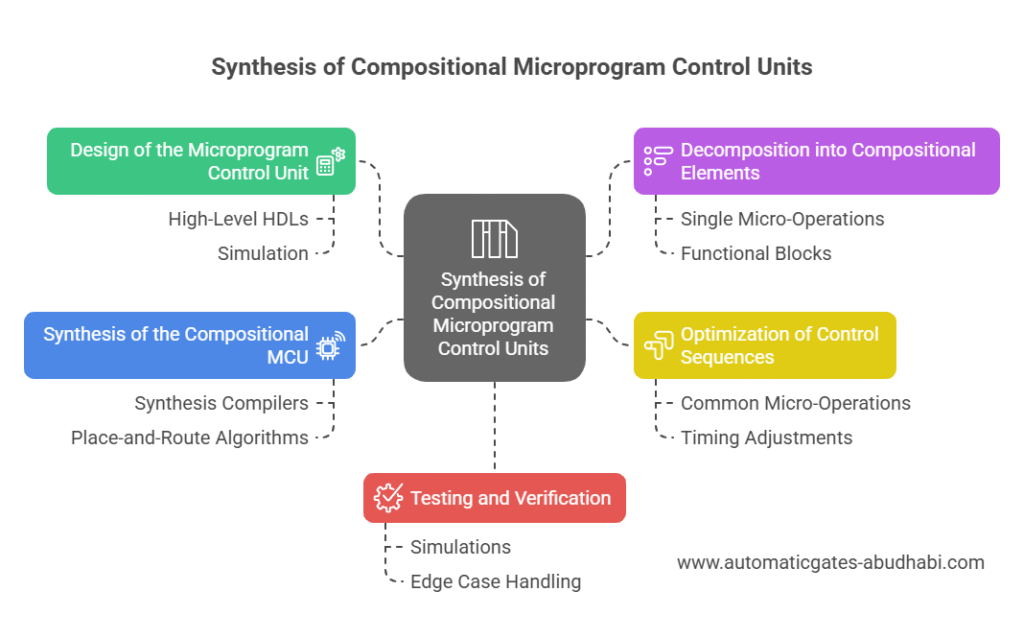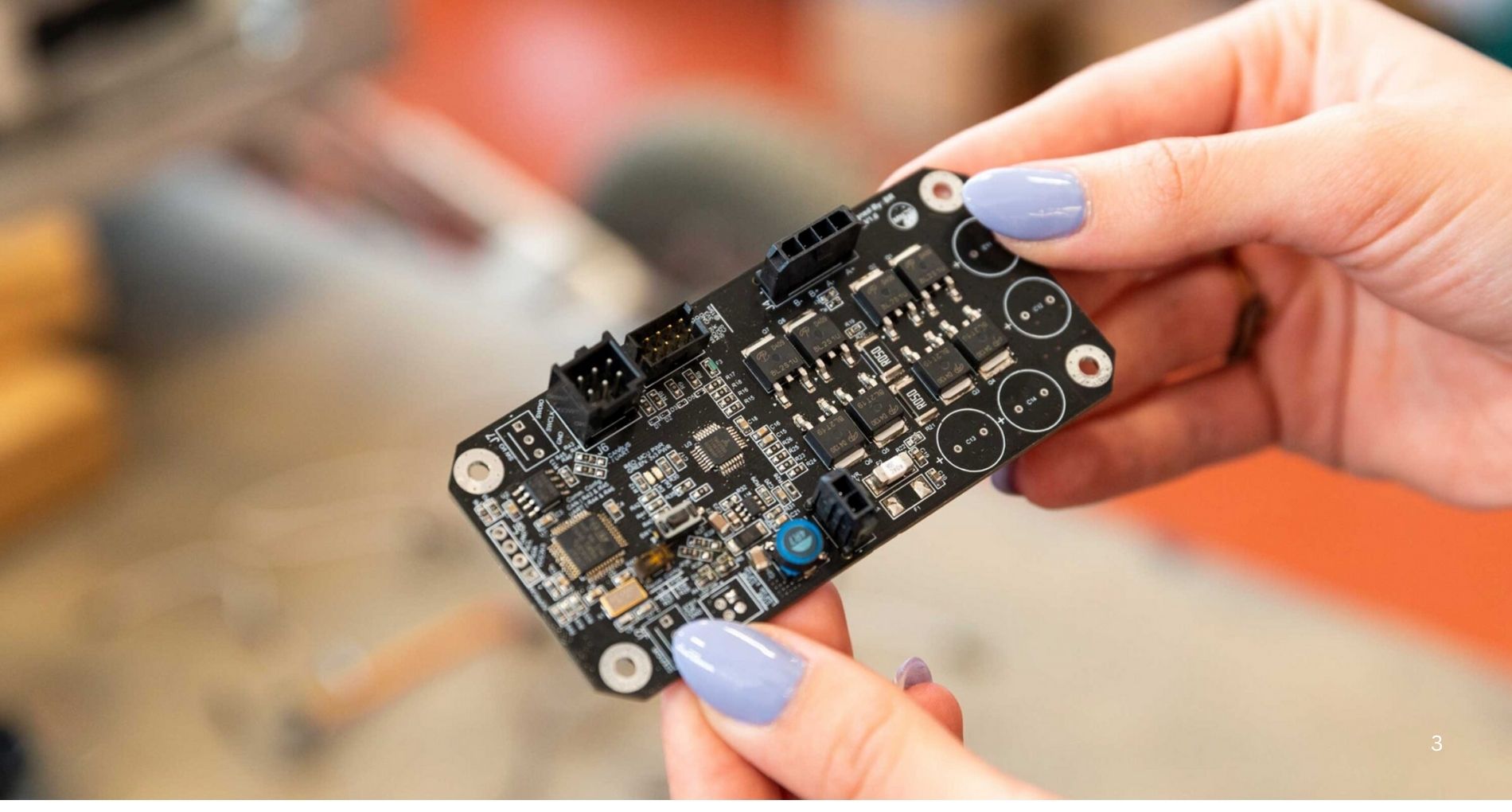Synthesis of Compositional Microprogram Control Units for Auto Gate Programmable Devices
The field of digital design and embedded systems continues to evolve, bringing forth complex and sophisticated hardware components used in a wide range of devices. One of the most fundamental elements in these systems is the microprogram control unit (MCU). A microprogram control unit plays a critical role in determining the operational behavior of programmable devices. Specifically, the synthesis of compositional microprogram control units is a vital process that enables programmable devices to perform a variety of functions efficiently and effectively.
In this article, we will delve into the synthesis of compositional microprogram control units for programmable devices, breaking down the concepts, methodologies, and importance of this process. Along the way, we’ll explore how microprogramming enhances flexibility, ease of configuration, and overall performance in modern computing systems, especially in specialized applications like automatic gate automation.

What is a Microprogram Control Unit (MCU)?
A Microprogram Control Unit (MCU) is a specialized hardware component responsible for generating control signals that direct the operation of a computer or programmable device’s processing unit. Essentially, it defines the behavior of the device by interpreting a sequence of micro-operations (micro-operations are low-level operations like fetching data, performing arithmetic, etc.) encoded in microinstructions.
In traditional control units, the control signals are hardwired into the hardware. In contrast, microprogramming uses a stored sequence of instructions to produce control signals. This approach offers flexibility because the microprogram can be altered or updated without changing the physical hardware.
Historical Context and Evolution of Microprogramming
Microprogramming was first proposed by Maurice Wilkes in 1951 at the University of Cambridge, marking a significant milestone in computer architecture. In his paper, Wilkes introduced the idea of using a control memory to store sequences of micro-operations that could be executed by a machine. This was revolutionary because it allowed for a flexible, software-based method of controlling hardware, as opposed to relying on rigid, hardwired control units. This innovation was part of the design of the Electronic Delay Storage Automatic Calculator (EDSAC), one of the first computers to use microprogramming.
The concept of microprogramming became more widespread in the 1960s and 1970s, with companies like IBM and DEC adopting microprogramming techniques in their mainframe and minicomputers. Early microprogramming in the 1960s and 1970s was used to support the development of more advanced computing systems, leading to better performance, ease of maintenance, and scalability.
By the late 1970s, the rise of microprocessors brought microprogramming into the realm of personal computing. This shift significantly impacted the development of personal computers, leading to more versatile and powerful systems. The 1980s and 1990s saw further advancements in microprogramming, including the use of Field-Programmable Gate Arrays (FPGAs) and the introduction of more sophisticated synthesis tools.
What Does “Compositional” Mean in Microprogram Control Units?
The term “compositional” in the context of microprogram control units refers to the modular and hierarchical organization of microprograms. A compositional MCU involves breaking down complex control sequences into smaller, reusable components that can be synthesized or assembled to meet the needs of the specific device in question.
Compositional synthesis allows for greater scalability and adaptability, as different microprograms can be combined and recombined depending on the requirements of the device. This modular approach simplifies the design and maintenance of microprogram control units, ensuring that they can be easily modified or upgraded in response to changes in hardware or functionality.
The Role of Microprogramming in Programmable Devices
Programmable devices, such as microcontrollers, Field-Programmable Gate Arrays (FPGAs), and digital signal processors (DSPs), rely heavily on microprogramming for their operation. Microprogramming enables these devices to perform a wide range of functions based on the loaded microprograms. By changing the sequence of microinstructions, programmable devices can be reconfigured to handle different tasks without the need for new hardware.
The synthesis of compositional microprogram control units in such devices is of paramount importance because it allows for:
- Flexibility: The MCU can easily be reprogrammed to handle different tasks or adapt to evolving specifications.
- Efficiency: Compositional MCUs make it possible to optimize control logic for specific operations, leading to more efficient hardware utilization.
- Modularity: The ability to break down complex programs into smaller modules makes it easier to manage, modify, and debug systems.
- Scalability: Compositional synthesis allows microprogram control units to scale effectively as device functionality grows or changes over time.
Microprogram Control Unit Synthesis Process
The synthesis of compositional microprogram control units typically follows a series of steps, often involving both design and optimization stages. Let’s take a closer look at the process:
1. Design of the Microprogram Control Unit
The first step in synthesis is the design of the control logic. This step involves defining the overall structure and functionality of the MCU. The designer will map out the required micro-operations and determine how each control signal will be generated.
During this stage, designers often use high-level hardware description languages (HDLs) such as VHDL or Verilog to describe the MCU’s architecture. These languages help in specifying the behavior of the control unit and allow for simulation to test the design before implementation.
2. Decomposition into Compositional Elements
Once the MCU’s basic design is complete, the next step is decomposition. Here, the designer breaks down the control logic into smaller, reusable components. These components can represent a single micro-operation, a sequence of micro-operations, or even entire functional blocks of the MCU.
This decomposition is crucial because it allows for modularity. When the design needs to be updated, the necessary changes can be made to individual components, minimizing the risk of errors and making the design process more efficient.
3. Optimization of Control Sequences
After decomposition, the next step is optimization. At this stage, designers analyze the control sequences and look for opportunities to reduce the number of micro-operations, eliminate redundant logic, and optimize the timing and resource usage of the MCU.
For example, designers might look for common micro-operations that can be reused across different microprograms or adjust the timing of operations to minimize delays and improve overall performance. This step is critical in ensuring that the MCU operates efficiently, especially when dealing with complex or high-performance devices.
4. Synthesis of the Compositional MCU
Once the design is optimized, the next step is the synthesis of the MCU. Synthesis refers to the process of converting the high-level design into a lower-level implementation, often mapped onto the physical hardware. At this stage, the individual compositional elements are integrated and arranged to create a functional microprogram control unit.
Tools like synthesis compilers and place-and-route algorithms help automate this process, ensuring that the design is translated into hardware in an optimal way. The result is a microprogram control unit that can effectively generate control signals for the programmable device.
5. Testing and Verification
After synthesis, it is essential to verify that the MCU works as intended. This typically involves running simulations to test the control unit’s behavior in different scenarios. Verification ensures that the MCU can produce the correct control signals and handle any edge cases that might arise in the operation of the programmable device.
If any issues are discovered during verification, the design may need to be iterated upon to resolve the problems before moving to the final implementation stage.
Importance of Compositional Microprogram Control Units in Automatic Gate Automation
Automatic gate automation systems are becoming increasingly popular in residential, commercial, and industrial applications due to their convenience, security, and efficiency. These systems often require highly reliable and adaptable control units to manage gate movements, sensors, and communication interfaces. Compositional microprogram control units play a pivotal role in ensuring the flexibility, reliability, and responsiveness of such systems.
In automatic gate automation, compositional MCUs are used to handle complex operations such as:
- Sensor Integration: Automatic gates rely on sensors (e.g., infrared, pressure, proximity) to detect the presence of vehicles or people. The MCU processes sensor data and triggers the appropriate actions, such as opening or closing the gate. By using compositional microprogramming, these sensor handling procedures can be customized and updated based on new sensor technologies or system requirements.
- Motor Control: The MCU controls the motors responsible for opening and closing the gates. Through microprogramming, the control logic can be optimized to manage various motor types, allowing for smoother operations, reduced wear, and energy efficiency.
- Safety Features: Safety mechanisms such as obstacle detection, emergency stop, and manual override are crucial in gate automation. Compositional microprogramming allows for quick updates to safety protocols and integration of new sensors or safety devices without redesigning the entire system.
- Remote Access and Communication: Many modern automatic gates allow for remote operation via mobile apps, keypads, or intercom systems. The MCU, programmed with compositional microinstructions, handles communication protocols and remote interactions. This capability makes it possible to upgrade or expand communication features as needed, providing ongoing support for new technologies.
Through the use of compositional microprogramming, automatic gate systems can be easily customized, enhanced, and updated, improving their functionality and ensuring they remain adaptable to emerging technologies.
Applications of Compositional Microprogram Control Units
Compositional microprogram control units are widely used in various types of programmable devices. Their flexibility and modularity make them ideal for applications where devices need to be adaptable and reconfigurable. Some common applications include:
- Embedded Systems: Microcontrollers and embedded devices often rely on compositional MCUs to handle different tasks based on the loaded microprogram.
- FPGAs and ASICs: These devices can leverage microprogramming to achieve custom behavior based on user-defined specifications, making them ideal for applications requiring high performance and flexibility.
- Digital Signal Processors (DSPs): DSPs, used in audio, video, and telecommunications, often use microprogramming to adapt to various signal processing tasks.
- Automatic Gate Automation: The flexibility and scalability of compositional MCUs make them ideal for controlling the various components of automatic gate systems, such as sensors, motors, safety features, and remote communication interfaces.
Conclusion
The synthesis of compositional microprogram control units for programmable devices is a fundamental process that significantly enhances flexibility, efficiency, and scalability in modern digital systems. Through the use of modular design, decomposition, optimization, and synthesis, microprogramming enables the creation of versatile and high-performance control units that power a wide range of devices, including those in the automatic gate automation industry.
As technology continues to advance, the importance of compositional microprogramming will only grow, with increasingly complex devices requiring even more sophisticated and adaptable microprogram control units. By mastering the synthesis of these control units, engineers can ensure that programmable devices, including automatic gate systems, remain versatile, efficient, and capable of handling the ever-evolving demands of modern applications.
References:
- Wilkes, M. V. (1951). The use of a stored program for the control of a digital computer. Proceedings of the IRE, 39(2), 130-134.
- Hennessy, J. L., & Patterson, D. A. (2017). Computer Architecture: A Quantitative Approach (6th ed.). Elsevier.
- Smith, M. (1982). The Microprogramming of Digital Computers. John Wiley & Sons, Inc.
- Kester, W. (2005). FPGA-based Digital Signal Processing: A Practical Approach. Newnes.




